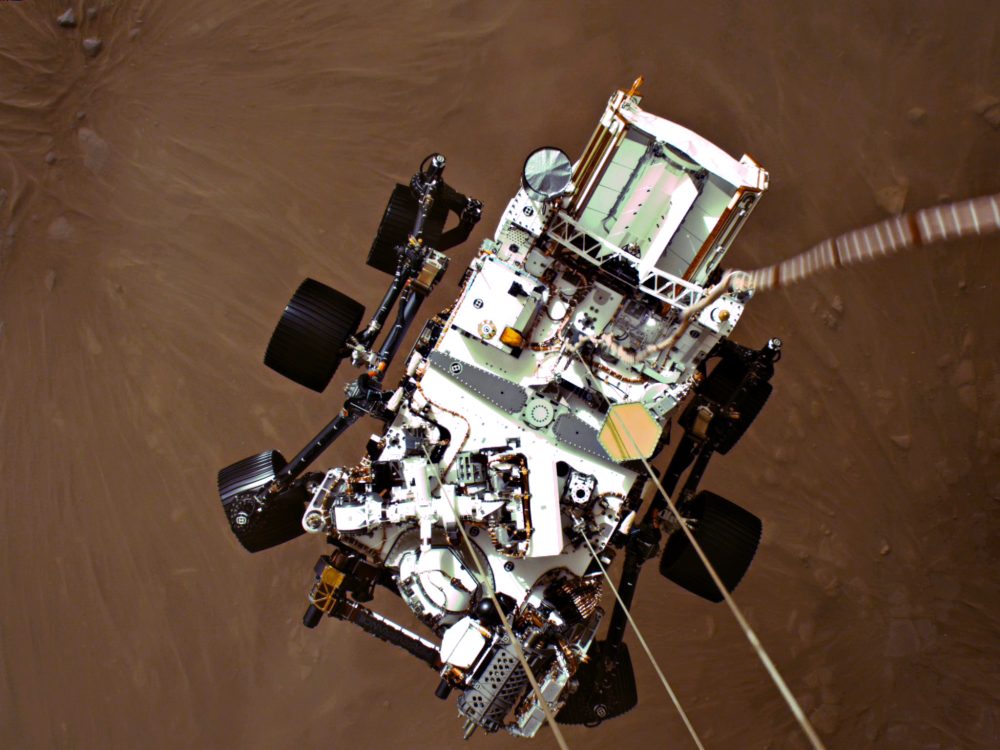
The Mars 2020 mission consisted of two main payloads, the Perseverance rover and a technology demonstration helicopter called Ingenuity. Perseverance was the 6th rover ever sent to the Martian surface and was based on the successful design of the 2011 Curiosity rover. On this day, Mars 2020 launched to space.
Construction of the Mars 2020 mission
Perseverance rover development
“Percy” as it is called, was announced back in 2015 at the American Geophysical Union in San Fransico. The $1.5 billion announcement was made after sweeping budget cuts at NASA forced them to innovate on their designs. This would mean the new rover would be based on many components and spare parts of the highly successful Curiosity rover.
Perseverance will share the body, nuclear power system, cruise stage, and landing sky crane from its twin but NASA would improve on many of the systems. One area of improvement was the wheels. NASA improved Percy’s version to be more resistant to breaking and offer better traction. Perseverance also had an upgraded robotic arm that houses a core drill. JPL built not one but two rovers, one would stay home on Earth for testing.

Ingenuity helicopter development
The concept for a Martian helicopter goes back to 2014, but it wasn’t approved for the Mars 2020 mission until 2018. The small helicopter used off-the-shelf parts and consists of a small box below two large rotors. The box contains all the flight navigation equipment and batteries, which are charged by a solar panel above the rotors. It hitched a ride on the belly of Perseverance before being deployed to the surface.

Mars 2020 launch: One year later
Like most things in 2020, the Covid-19 pandemic gave a scare of pushing the mission far enough back to miss the 2020 Martian transfer orbit. While most 2020 missions did show delays, NASA authorized Mars 2020 as a mission-critical launch so teams could continue to work toward the launch date.
One year ago today, stacked on top of a ULA Atlas V rocket, Perseverance and Ingenuity awaited launch from Cape Canaveral Air Force Station (now Space Force Station). On July 30th, 2020, ULA counted down to 0 and launched Mars 2020 on its way to Mars. To date, ULA has launched all of NASA’s missions to Mars.

It would only take 1 hour from launch to deployment of the cruise stage for Mars 2020. Over the following months, teams at JPL powered on the rover and helicopter, ensuring all was well for their descent to the Martian surface. The journey would take about 6 months to get to Mars, landing in Jezero Crater on February 18th, 2021.
Read More
- Mars Helicopter Ingenuity completes 9th flight over Fourth of July weekend
- NASA rover Perseverance is on the way to Mars following successful ULA Atlas V launch
- Mars Helicopter Ingenuity spots Perseverance Rover on Mars surface while in flight
Want to help support Space Explored?
Shop on Amazon to support Space Explored writers.
Directly support Seth by becoming a member of their Patreon.
Enjoy reading Space Explored?
Help others find us by following on Apple News and Google News. Be sure to check us out on YouTube, Twitter, Facebook, and Instagram, join our Discord!
FTC: We use income earning auto affiliate links. More.



Comments